Guides at Texas plantation committed to preserving truth of 'a very uncomfortable history'
WEST COLUMBIA — Back in February, during a break from a winter reading retreat at a beach on the Texas coast, I traveled inland to tour an old plantation.
I knew that I would encounter uncomfortable history. What I did not expect was how difficult it is these days to tell the true stories of Texas past, especially in the face of new state laws that attempt to limit the ways that the fact of slavery is taught.
One of the interpreters at the Varner-Hogg Plantation, Kennedy Wallace, was particularly helpful guiding me through this conundrum that she shares with other Texas tour guides and educators.
Recently for instance, Wallace, who is Black, gave a tour of the plantation to a group of Black visitors, mostly children, and she chose her words carefully, which she would have done on any occasion.
"I tried not to go into great detail about how a runaway slave was punished," Wallace remembers. "But one of the Black fathers in the group told me to proceed, saying: 'No, they need to know.' I then gave the same details Sarah Ford did during her slave narrative."
'Kind and gentle': Remembering Texas preservation architect David Hoffman
Ford's eyewitness account of slavery might, in the telling today, make a white audience feel shame or guilt, or a Black audience anger and resentment. None of that changes the fact that her story is crucial.
She was enslaved on this very plantation in West Columbia. Ford was interviewed at her Houston home in 1937 as part of a Federal Writers Project oral history program. Her story is available online through the Library of Congress.
Ford's account of the punishment of one runaway includes whippings, scaldings with hot grease, and shackling in the smokehouse while the burns remained untreated.

Yet interpreters like Wallace are somewhat hampered these days by new state laws that limit how educators can carry out discussions about history and race.
Because of HB 3979 and SB 3, two laws that were passed during 2021 legislative sessions and were signed by Gov. Greg Abbott, then went into effect last year, Wallace and other tour guides balance on the edge of a legal precipice.
The laws prohibit educators from discussing certain historical, social and political issues, including ideas that “the advent of slavery in the territory that is now the United States constituted the true founding of the United States.”
For example, SB 3 forbids teaching that “an individual, by virtue of the individual’s race or sex, bears responsibility, blame or guilt for actions committed by other members of the same race or sex.”
The laws don’t explicitly mention critical race theory, a framework of thought used in colleges to examine racism across structural and legal systems in the U.S., but they were passed amid a conservative movement against "CRT."
Critics of the laws fear their broad scope will chill discussions of history and racism.
It's hard, for instance, to tell the whole story of this sugar plantation, one of dozens planted on this rich Brazos River bottomland, without mentioning the conditions under which the Black families lived and worked.
"It's a very uncomfortable history," agrees Shannon Smith, assistant site manager. "We are not trying to make people feel bad. But rather we are showing a real representation. We are trying to get away from 'hoop skirts and happiness.' Going slow and steady. Not changing history, but expanding it."
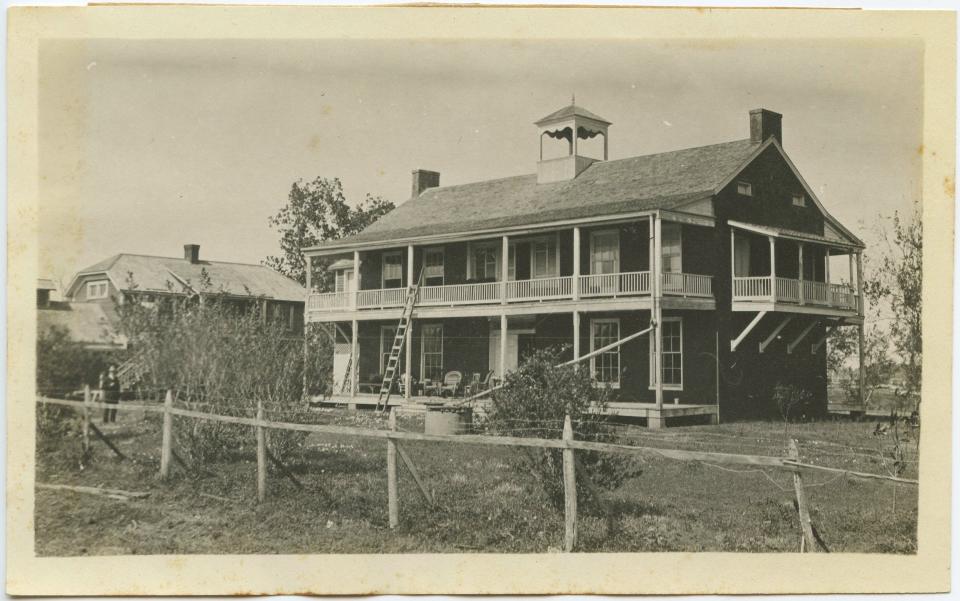
From frontier farm to historical classroom
No matter the tour, Wallace, who graduated from Prairie View A&M University, responds to any question with simple, factual answers at this Texas Historical Commission site on Varner Creek, not far from where it flows into the Brazos.
The Varner-Hogg Plantation can be used to interpret more than 150 years of rural life on the Gulf Coastal Plain. In recent years, site managers have made extraordinary advances in explaining the role of slavery and convict labor as part of that story, as well as other stories that had been left fallow since philanthropist Ima Hogg gave the spot to the state in 1958.
Varner-Hogg is not far from East Columbia, the original 1820s town site on the banks of the Brazos upstream from Old Velasco and Brazoria. Now basically one street lined with mostly historical structures, East Columbia flooded badly, which is why most people moved to higher ground in West Columbia.
Here, not far from the surviving plantation, rose one of the rough early capitol buildings from the Republic of Texas era.
A shiny Walgreens now occupies that site.
All the more reason to preserve and interpret the 19th-century plantation, reached via a park road at the end of North 13th Street off the recently improved and widened Texas 35.
In 1815 or 1816, Martin Varner entered Spanish Texas illegally along the Red River. He joined American leader Stephen F. Austin in 1822 at his sanctioned colony between the lower Colorado and Brazos rivers, making him one of the Old Three Hundred, as Austin's earliest colonists were called.
'Beautiful Texas': Readers shout out these songs about the Lone Star State
Varner made legal claim to the wilderness around the creek that bears his name in 1824 and worked out of a log structure.
Ten years later, Varner sold the still fairly raw acres to John Patton and his sons Columbus and Sinclair. This was the family that ordered, around 1835, the construction of the Greek Revival main house that faced the creek, as well as a brick sugar refinery and quarters for enslaved people on the other side of the creek.
Texas history, delivered to your inbox
Click to sign up for Think, Texas, a newsletter delivered every Tuesday
These structures were joined by barns, stables, bungalows and other out buildings through the years, and recently by a metal, climate-controlled structure that preserves artifacts from here and other historical sites in the region.
In 1901, the plantation acquired its second titular surname when former Gov. Jim Hogg purchased it as a family retreat. Renovated by his son, Will Hogg, and furnished by his daughter, Ima Hogg, the main house became a showplace and vacation home. She filled it with furniture and décor that she felt matched the two-story 19th-century home.
Given the brutal heat, humidity and insect life along the Texas coast during the summer — without much relief from direct Gulf breezes this far inland — it must have been an uncomfortable sort of oasis.
Parts of the land were sold off over the years. Income from cotton, sugar, corn and cattle was replaced by an active oil field that built the Hogg family's wealth. Pumps on the land still produce petroleum. Much of today's proceeds go not to the historical site, but to the University of Texas, which includes on its campus an auditorium and a mental health foundation that bear the Hogg name.
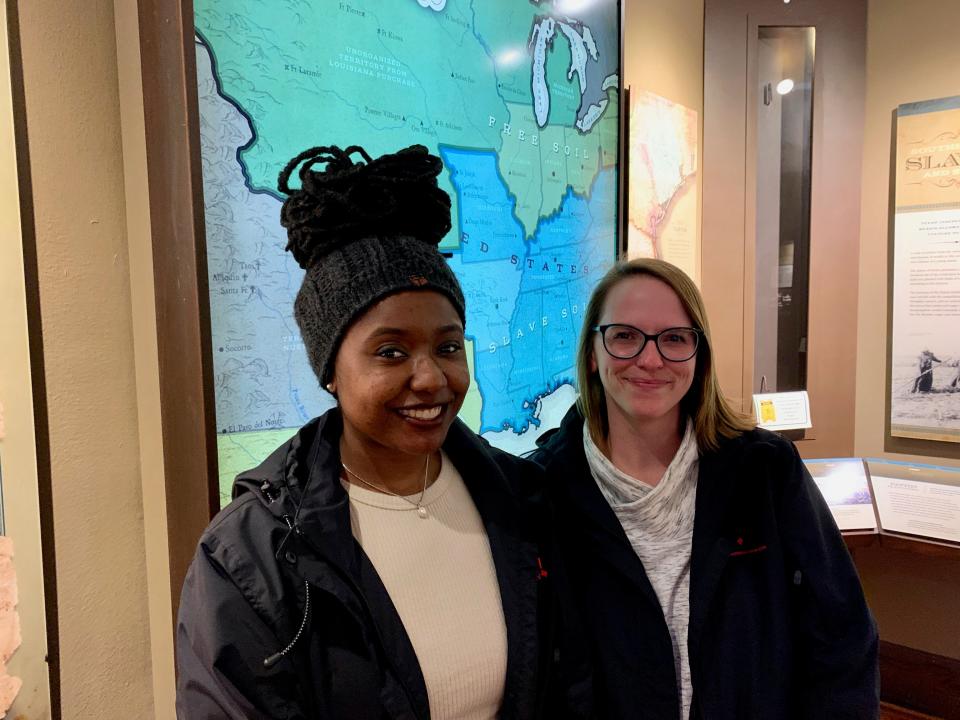
The visual and oral storytelling evolves
On the plantation grounds, the Hoggs nurtured the look of the Old South with ancient magnolias and oaks draped with Spanish moss. In 1920, they outfitted the main kitchen with a stove to complement the brick fireplace.
Earlier, they had encased the house's structural bricks — marked by the thumbprints of the enslaved workers who fired and laid them — with plaster. That last move, unfortunately, ensured that the bricks inside would slowly deteriorate in the trapped moisture.
"Now the plaster is about the only thing keeping the house from falling down," Smith jokes.
Gov. Hogg died in 1906 and Will Hogg renovated the house from the 1910s through the 1920s. The Hogg children felt like their father was Texas' version of George Washington, so Will wanted the home to look like Mount Vernon.
Texas History: Among Galveston's historical gems, don't skip the Rosenberg Library
In 1958, Ima Hogg — who filled Bayou Bend, her home in Houston's River Oaks neighborhood, with antiques — gave Varner-Hogg and its set of antiques to the state of Texas. For generations, West Columbia locals dressed in antebellum finery for "Plantation Days," and curious visitors toured the big house that once faced the creek, where small steamboats loaded up with sugar and other products to sell downstream.
(The Hoggs switched the main entrance toward the road instead.)
What the tourists did not learn were the particulars about the lives of the enslaved and convict workers, as many as 89 at a time, who made this all happen.
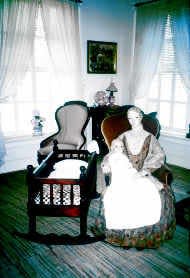
Decades ago, site managers had staged the scene with the lovely objects that Ima Hogg had collected, but even those did not relate directly to the plantation's 19th century owners or the people who worked there.
Two years ago, when the air conditioning broke down in the main house, Ima Hogg's collection of furniture and décor was carefully catalogued and stored in a new climate-controlled metal building. It might not ever go back in the main house. It is better preserved and explained here.
Site director Chris Elliott and his crew built this vital structure that serves as a regional storage facility for other historical sites and as a model for other Texas Historical Commission sites.
Anyone can tour this amazing storeroom, which also acts as an educational lab so that visitors and students can observe the science behind the preservation process.
"People like to look behind the scenes," Elliott says. "This place has been a godsend."
Curator Angela Pfeiffer has worked at Varner-Hogg for 16 years and appreciates the way it has evolved.
"Each year it keeps changing," she says. "We are discovering new stories and new ways to tell old stories. The place has grown from a loose group of homemade exhibits into an educational place made up of professional exhibits."
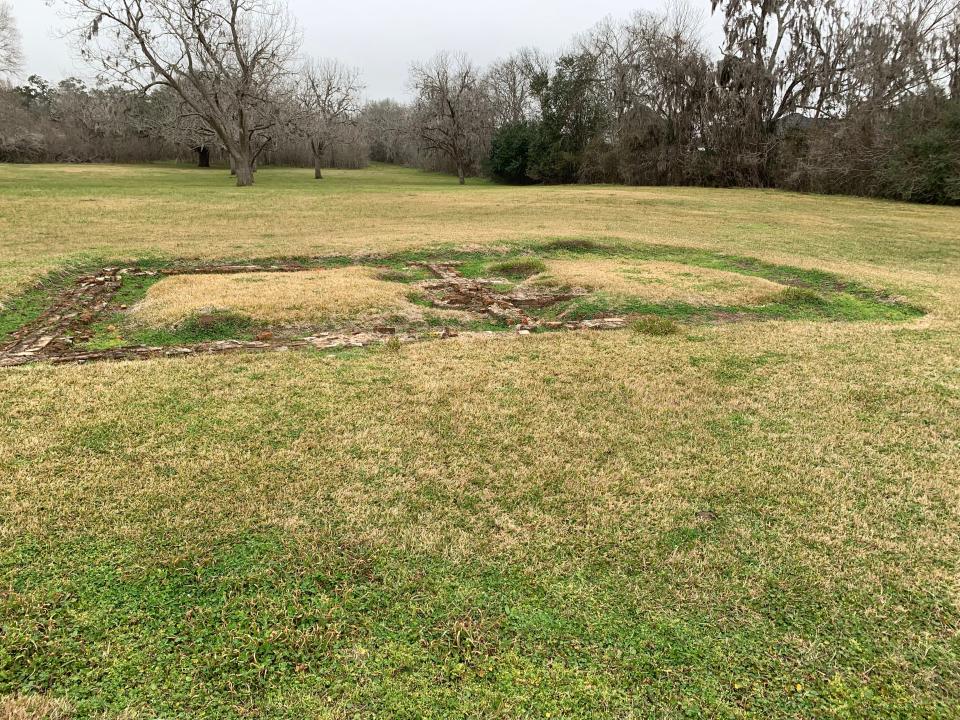
Varner-Hogg today
My tour of the 66 acres of Varner-Hogg included a stop at the kitchen, which is filled with old cooking implements and reminders of daily life 100 or 150 years ago.
"Patton's slave, Judah Smith, was a cook," Wallace says. "She worked from 4 a.m. to 10 p.m. She cooked for the family, for guests and for other slaves. She used recipes that came with African, Indigenous and European origins."
The big house, built around a central breezeway, and its landscaping are under renovation. We crossed a small bridge to see the brick remnants of the old sugar house and quarters for enslaved people.
Now, slowly but surely, the broader cultural story is being told, but not without consequences.
After HB 3979 and SB 3 passed, school tours declined, says Elliott.
"It's a difficult story to tell third-graders," Elliott says. "And it makes it more difficult to do our job and not make any individual feel bad about their race. These sites are emotional and we can't use facts if it makes them feel bad."
One particularly effective artifact is a probate court listing of 66 enslaved people with their names and birthplaces, some of them from Africa. That's not information one can find in U.S. Census records. Instead, it is often on these legal and medical records of people treated as property that genealogists can discover crucial clues about a Black family's past.
According to the Handbook of Texas, of the 23 sugar producers in Brazoria County in 1849, the Patton plantation was the fifth most productive. It produced 275,000 pounds of sugar and 22,000 gallons of molasses. Even though the Patton family lost steam after the patriarch was declared insane, the plantation continued to produce sugar under the convict lease system, which is seen today as a brutal extension of slavery after the Civil War.
The 1900 Galveston storm blew down the sugar house and some other structures.
One can also tour up-to-date exhibits about farm life, oilfield roughnecks and the institution of slavery at the visitors center, a barn and at a bungalow called "Ima's Cottage."
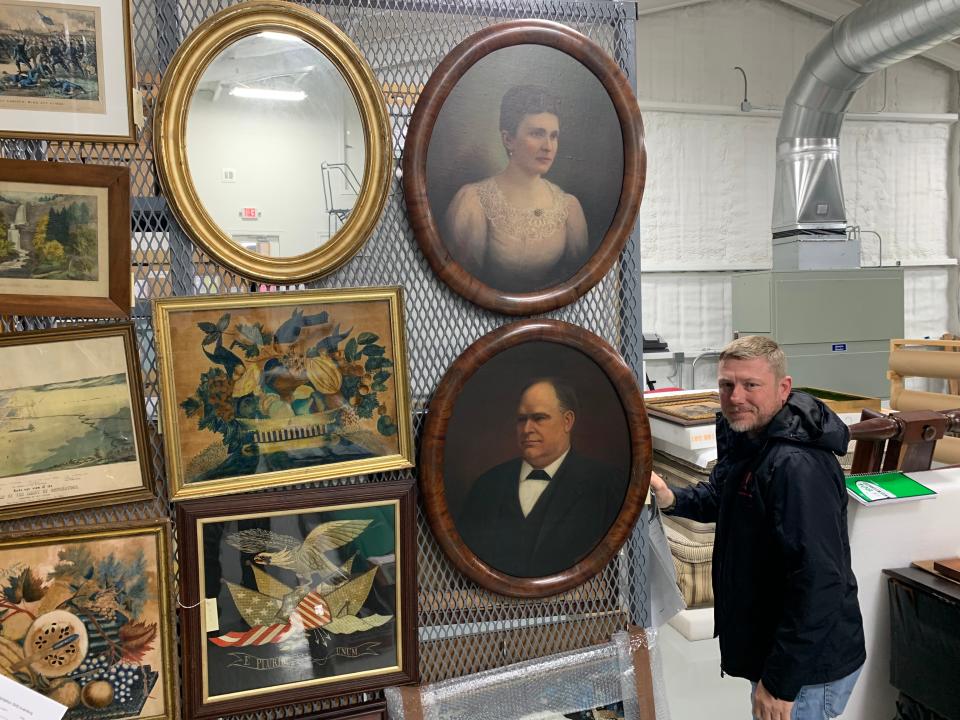
Interpreter Wallace is sensitive to the signs and symbols of the plantation, from the Greek Revival architecture to the big moss-draped trees, which might make some white visitors flash to the elegance of the antebellum South as depicted in movies and novels, but carry very different meanings for Black visitors — who have increased in numbers during recent years.
Despite the difficulties presented by the new state laws, Wallace has grown accustomed to talking directly — if carefully — about slavery. To her, the stories are as important as the preserved historic site. All that might change.
"Some people just shut down," says Wallace, a Memphis, Tennessee, native who studied historic preservation at the Savannah College of Art and Design and discovered an interest in cultural heritage studies along the way. "I just gave a tour today, and the Black elders asked me if I'm OK with telling this history.
"I told them: 'Now I'm more comfortable.'"
Michael Barnes writes about the people, places, culture and history of Austin and Texas. He can be reached at mbarnes@statesman.com. Education reporter Maria Méndez contributed to this story.
This article originally appeared on Austin American-Statesman: Texas plantation life now more broadly interpreted at Varner-Hogg.

